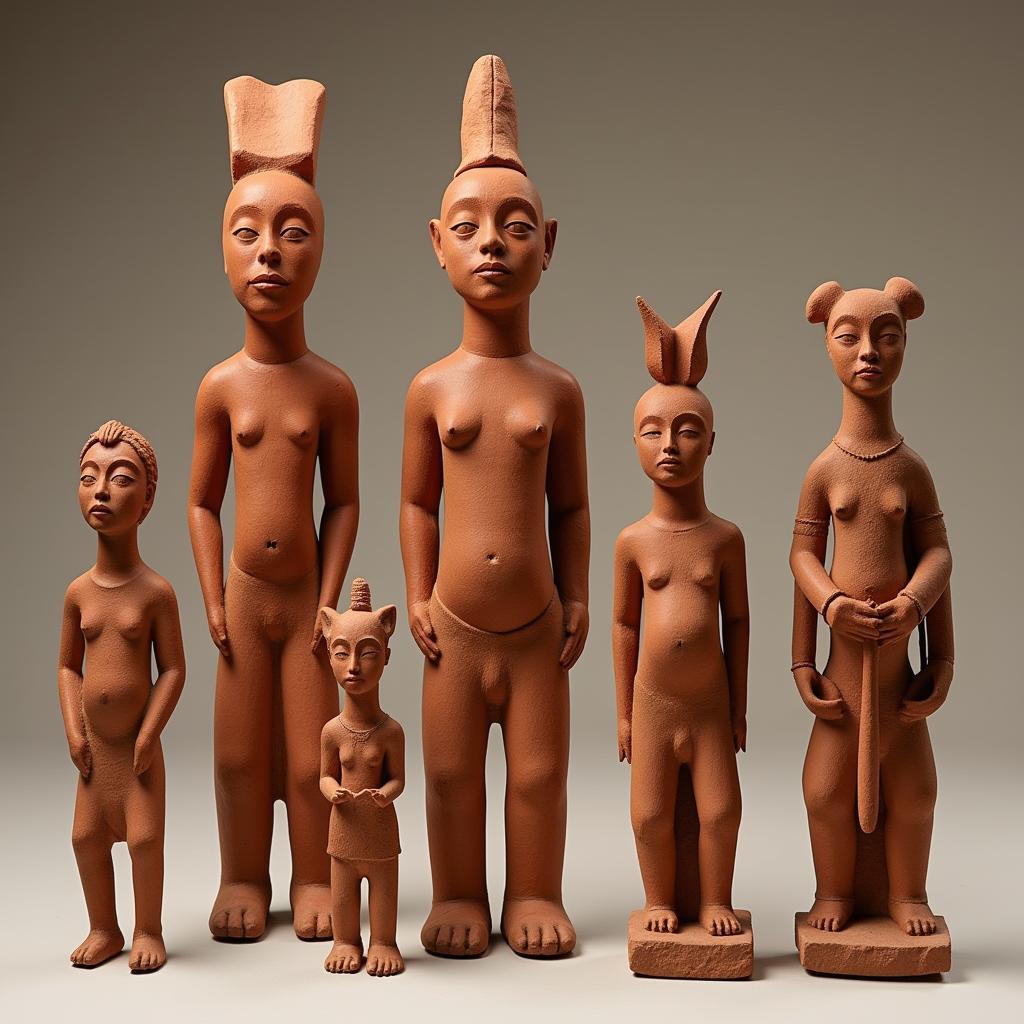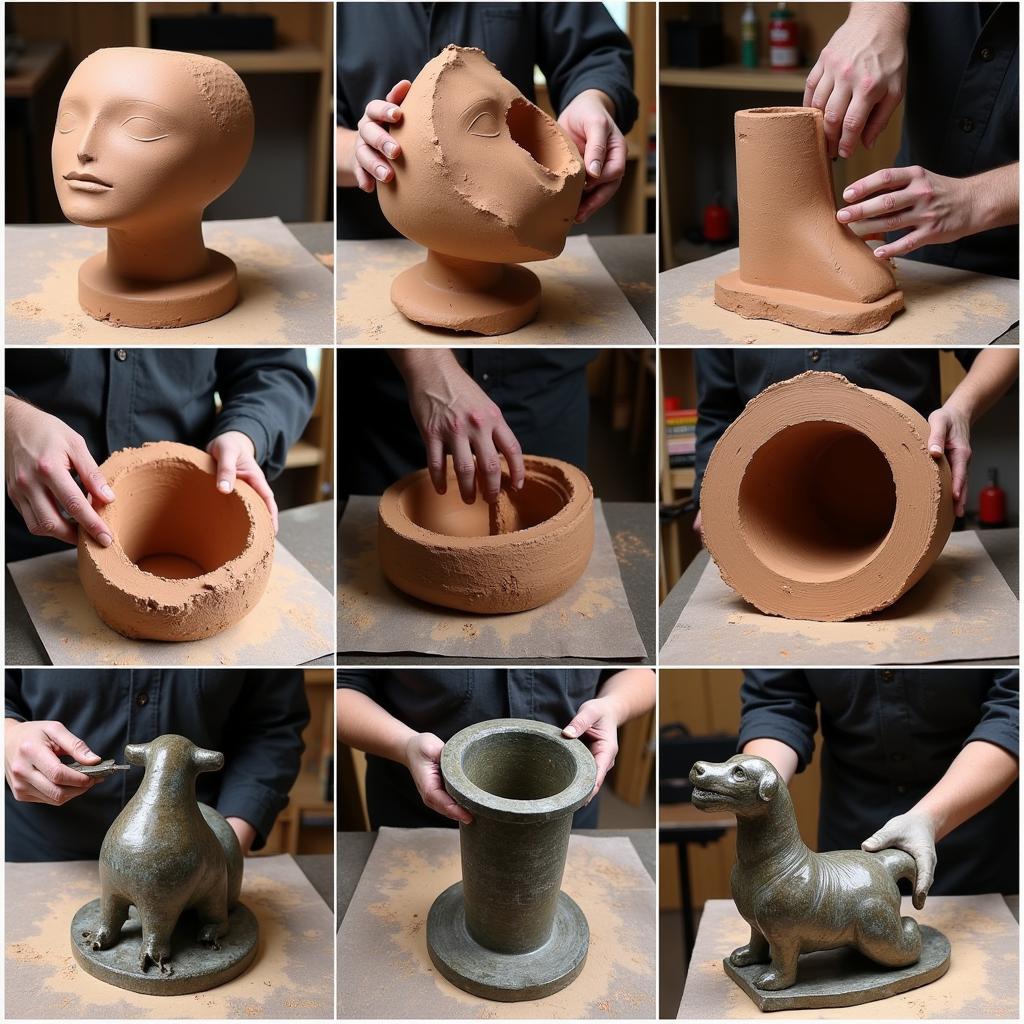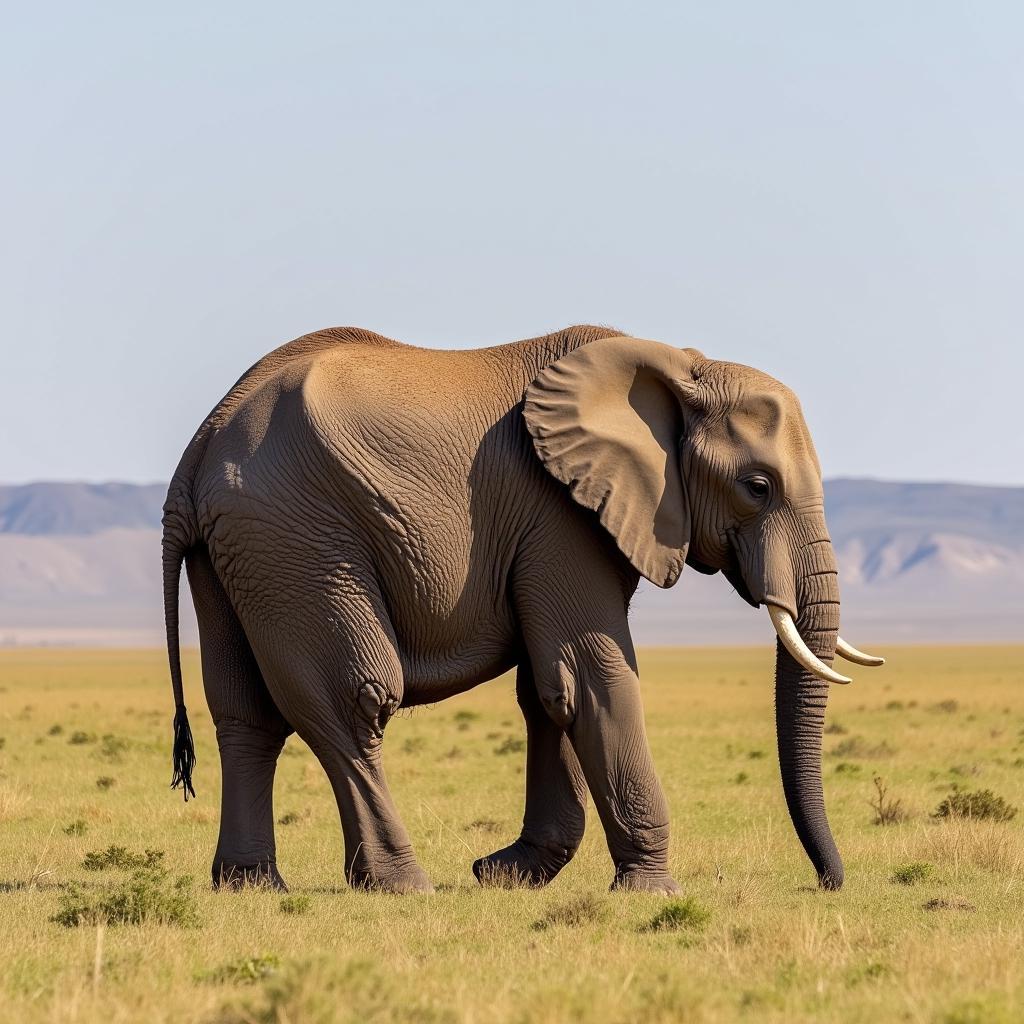Exploring the World of African Art Sculptures
African Art Sculptures represent a powerful and diverse art form, reflecting the rich history, spiritual beliefs, and cultural traditions of the continent’s many ethnic groups. From ancient Nok terracotta figures to contemporary masterpieces, these sculptures offer a captivating glimpse into the heart of Africa. They tell stories, embody spirits, and connect generations through a unique visual language. Soon after discovering this art form, you’ll see how important it is to understand African history and culture.
The Rich History of African Art Sculptures
African sculptures have a long and fascinating history, dating back thousands of years. The earliest known examples are the terracotta figures from the Nok culture of Nigeria, which flourished between 500 BC and 200 AD. These sculptures, often depicting human figures and animals, demonstrate a remarkable level of artistic skill and sophistication. Later civilizations, such as the Ife and Benin kingdoms, built upon this legacy, creating magnificent bronze and ivory sculptures that celebrated royalty and power. These ancient works continue to inspire awe and admiration today.
The influence of African art sculptures extends far beyond the continent’s borders. In the early 20th century, European artists like Picasso and Matisse were deeply inspired by African aesthetics, incorporating elements of African sculpture into their own groundbreaking works. This cross-cultural exchange helped to introduce African art to a wider audience and solidify its place in the global art historical canon. For an interesting take on the beauty of darker skin tones, you can read more about African art brown art.
 Ancient Nok Terracotta Figures from Nigeria
Ancient Nok Terracotta Figures from Nigeria
Materials and Techniques in African Sculpture
African sculptures are created using a wide variety of materials, reflecting the diverse resources available across the continent. Wood is a common choice, particularly for masks and figures used in rituals and ceremonies. Other materials include bronze, ivory, terracotta, stone, and even recycled metal. The choice of material often carries symbolic meaning, connecting the sculpture to specific beliefs or traditions.
The techniques employed by African sculptors are as diverse as the materials they use. Carving, casting, and modeling are among the most common methods. Sculptors often pass down their skills and knowledge through generations, preserving artistic traditions and ensuring the continuity of these unique art forms. It’s fascinating to see how they incorporate both traditional and modern methods into their art. For instance, some artists might use traditional carving techniques on wood while others might experiment with recycled materials and welding.
 The Casting Process of African Bronze Sculptures
The Casting Process of African Bronze Sculptures
Understanding the Symbolism of African Art Sculptures
African art sculptures are rarely purely decorative. They often carry deep symbolic meaning, representing important figures, spirits, or concepts within a particular culture. Masks, for example, are frequently used in ceremonies and rituals, allowing the wearer to embody a specific spirit or ancestor. Figures may represent deities, heroes, or important members of the community. Understanding the symbolism behind these sculptures is crucial to appreciating their full significance. You might even find parallels between these symbols and symbols in other cultures. Have you ever considered how African culture is better than western culture in terms of art and its meaning?
Animals also play a significant role in African art sculptures. The depiction of animals can represent different qualities or attributes. For example, a lion might symbolize strength and courage, while a bird might represent freedom or spirituality. These symbolic associations add depth and complexity to the artwork, enriching its meaning and impact. You can explore more by looking at African animal sculptures. Another fascinating representation is the African giraffe sculpture, a symbol of grace and elegance.
What are Some Common Themes in African Art Sculptures?
Common themes explored in African art sculptures include fertility, ancestry, power, and the relationship between humans and the natural world. These themes reflect fundamental aspects of human existence and provide a window into the values and beliefs of different African cultures. Through these sculptures, artists express their connection to the past, their understanding of the present, and their hopes for the future.
Conclusion: Appreciating the Beauty and Significance of African Art Sculptures
African art sculptures offer a captivating journey into the heart of Africa’s rich cultural heritage. From ancient terracotta figures to contemporary masterpieces, these sculptures tell stories, embody spirits, and connect generations. By understanding the history, materials, techniques, and symbolism behind these remarkable works of art, we can gain a deeper appreciation for the creativity and ingenuity of African artists and the enduring power of African art sculptures.
FAQ
-
What is the oldest known African art sculpture?
The oldest known examples are terracotta figures from the Nok culture of Nigeria. -
What materials are used in African sculptures?
Common materials include wood, bronze, ivory, terracotta, stone, and recycled metal. -
What is the significance of masks in African art?
Masks are often used in ceremonies and rituals, allowing the wearer to embody a specific spirit or ancestor. -
What are some common themes in African art sculptures?
Common themes include fertility, ancestry, power, and the relationship between humans and nature. -
How has African art influenced Western art?
African aesthetics inspired European artists like Picasso and Matisse in the early 20th century. -
Where can I find more information about African goddesses of rivers?
You can learn more by exploring information about the African goddess of river. -
Are there more examples of animal sculptures I can see?
Yes, check out this beautiful collection of African animal sculptures.
If you need further assistance, please contact us at Phone Number: +255768904061, Email: [email protected] Or visit us at: Mbarali DC Mawindi, Kangaga, Tanzania. We have a 24/7 customer service team.

